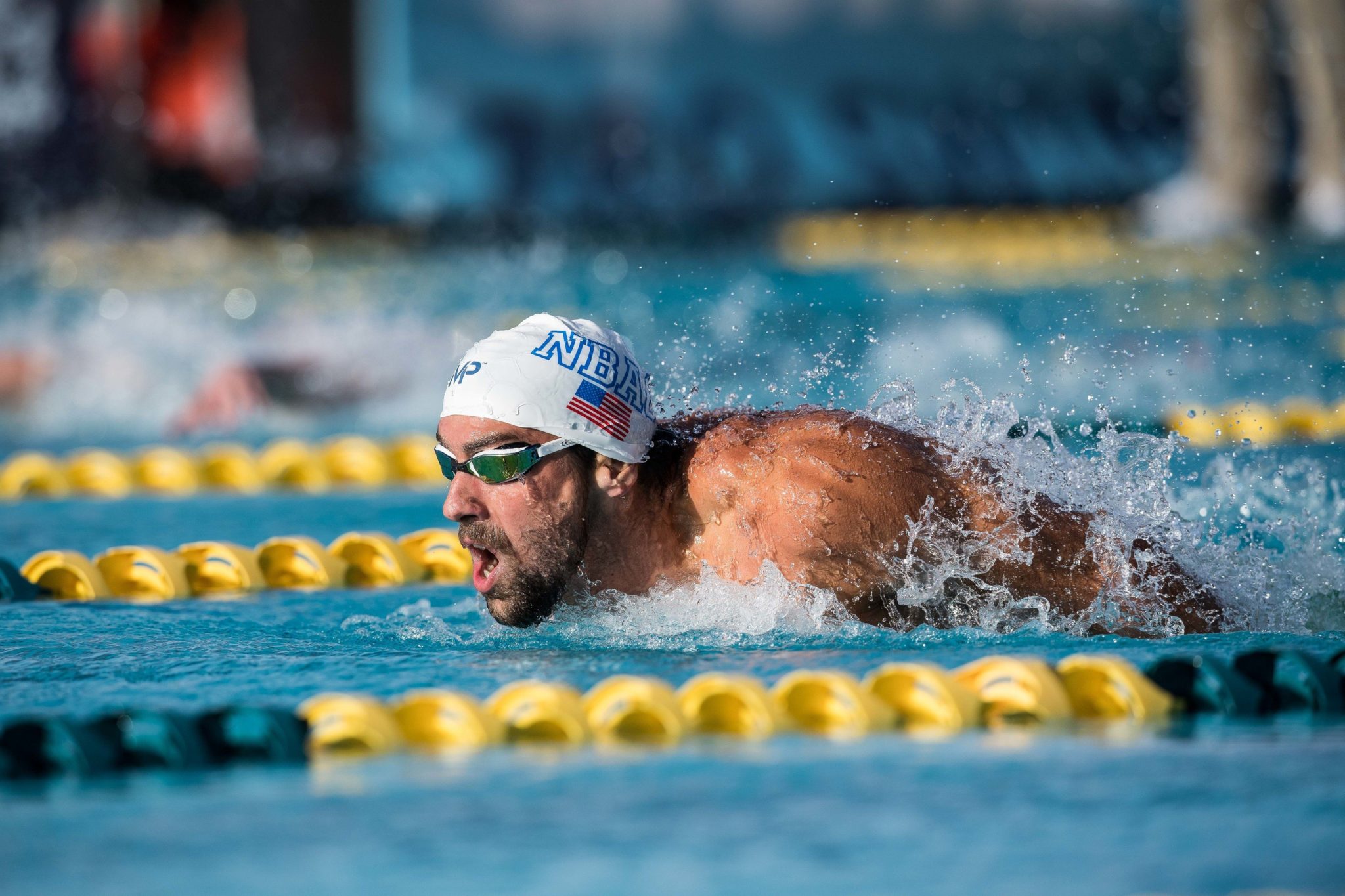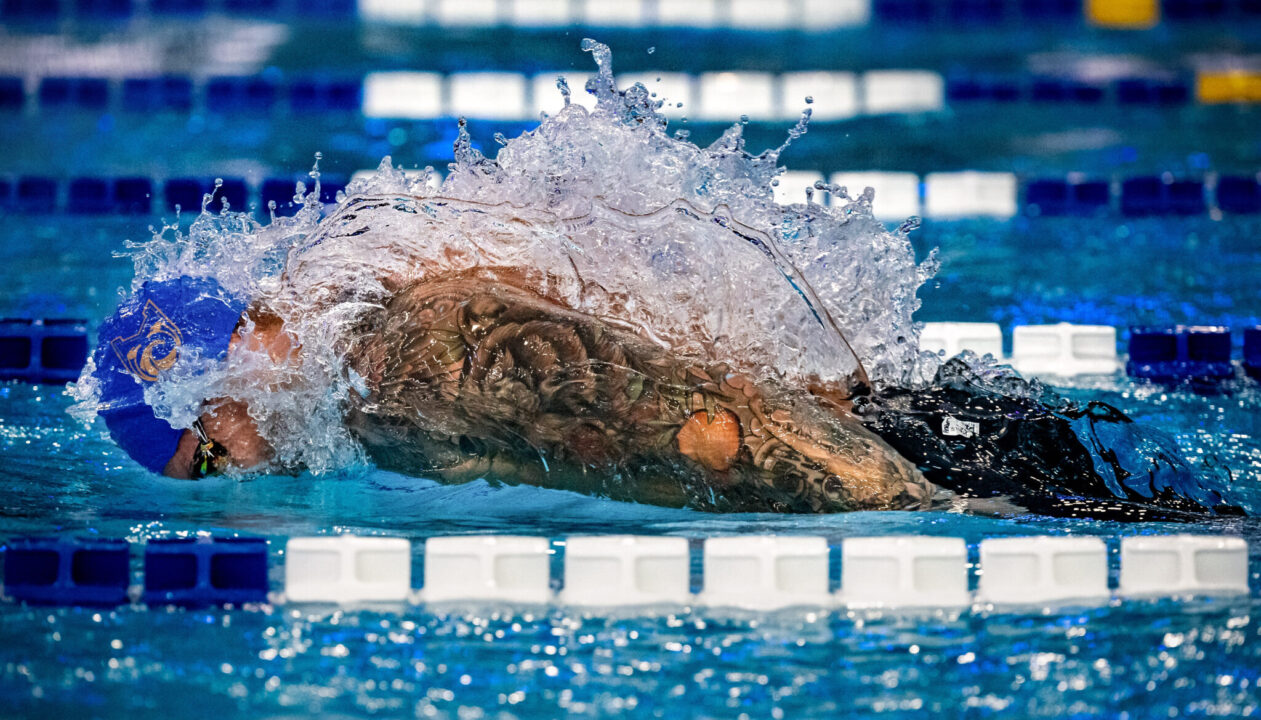Looking to get more from your butterfly? Here are eight tips for the perfect butterfly stroke technique.
The butterfly stroke is one of the most challenging strokes to master and is the hardest stroke to do for extended periods of time.
But once you master the butterfly stroke technique, there is perhaps no greater feeling. Executing the timing, rhythm, and straight-up power of a fast butterfly is a thing of beauty.
In this guide to swimming with perfect butterfly technique, we will look at the key aspects of a smooth, powerful, and fast butterfly stroke.
Less struggle-time, more speedy-time.
Let’s dive right in.
How to Master Butterfly Stroke Technique
In this guide to butterfly stroke, we will look at the following components of swimming with excellent butterfly technique:
- Use a straight-arm recovery
- Swim with a flatter body position
- Reduce chin lift when breathing
- Breathe late in the stroke cycle
- Kick continuously
- Train with shorter distances
- Incorporate drills to master timing
- Improve core strength
Let’s take a look at each tip in more detail and how you can implement this actionable advice to sharpen your butterfly stroke.
1. Use a straight-arm recovery.
For a long time, a bent arm recovery was the go-to for world-class butterfliers.
Mark Spitz, 7-time Olympic gold medalist at the Munich Games, had a slightly bent arm recovery in the 100m and 200m butterfly as he churned to world records in both events.
A straight arm recovery allows for swimmers to bring the arms around just over the surface, avoiding excess undulation and shoulder rotation.
Recovering with straight arms in butterfly helps swimmers stay in a more efficient body position and reduces the amount of energy required to complete the stroke.
2. Swim with a flatter body position.
While undulation is a critical aspect of swimming fast butterfly, particularly as it comes to executing smooth and powerful dolphin kicks, an excessively wide undulation also creates a heaping ton of frontal drag.
Aim for a narrow “window” to do butterfly stroke within and swim with a narrow amplitude near the surface of the water.
A simple cue to use for swimming with an efficient, at-the-surface stroke in butterfly is to aim for a “dry back.”
“We look for a dry back a body position in which a large portion of the back is visible during the stroke,” says Bob Bowman, longtime coach of Michael Phelps, the greatest butterflier in history.
“This position ensures that the swimmer is moving near the surface and not performing excessive up-and-down movement.”
3. Reduce chin lift when breathing.
When breathing during the butterfly stroke, bring the head out of the water, with the chin just above the surface of the water. Instead of arcing the head outwards and upwards, point the face forward when breathing.
This will help reduce excess undulation in the stroke and eliminate wasted up-and-down movement.
When breathing during butterfly, the chin should “ride” the water’s surface. (See Phelps demonstrating the “chin rider” head placement in the image below.)
4. Breathe late in the stroke cycle.
Timing is perhaps the most challenging aspect of the butterfly stroke.
Breathe too early in the stroke cycle, and the hips sink and momentum craters, leading to a “start and stop” stroke. A fast, efficient butterfly stroke means you are breathing without disrupting the rhythm of the pull and kick.
A quick cue swimmers can use to breathe properly during butterfly is connecting the hands-under-the-chest to breathing.

Credit: Mike Lewis
Swimmers should aim to pick their heads up for a quick breath right as the hands pass under the chest and abdomen during the pulling motion.
Take that breath and then tuck the head back into a streamlined position.
This helps swimmers take advantage of a hydrodynamic glide position, increase efficient rhythm of the stroke, and restart the catch and pulling phases smoothly.
5. Kick continuously.
As a young age grouper, we were taught that the butterfly was all about one big kick, one small kick. (Back when I had to walk uphill, in the snow, 10km, to morning swim practice and back 😉.)
Like many things in the sport, this “big kick, small kick” concept has changed over the years as swimmers and coaches have refined technique and training in the water.
The two kicks in the butterfly should be equal in size and intensity.
“We ask swimmers to think of butterfly kicking as similar to skipping a rope,” says Bowman.
“The feet should always move, and the knees should bend to approximately 90 degrees before the swimmer initiates the propulsive backward and downward motion.”
The second kick in the stroke cycle also sets up the breath more efficiently and kicks the hands forward into the glide and catch.
- Tip: Kicking drills like vertical kicking, fish kicking, and especially dolphin kicking on the back can help swimmers develop a more fluid and well-rounded dolphin kick while swimming butterfly.
6. Train shorter distances for better technique.
Swimming butterfly is grueling and energy-intensive. Unsurprisingly, according to Harvard Health, swimming butterfly burns the most calories of the swimming strokes.
Even the greatest butterflier of all-time, Michael Phelps, who broke the 200m butterfly world record multiple times, didn’t do long, unbroken butterfly repetitions for distance.
Instead, he focused on shorter distances in the pool that allowed him to swim with race-quality technique for extended periods of time at practice.
Sets like 45×50-yards [10 on :45 focused on stroke control + 5 on :35 fast] meant he avoided using a “survival stroke” and increased race-specific endurance.
A proper butterfly stroke is developed through focused, high-quality sets emphasizing technique, so don’t fear breaking up the sets to ensure better stroke mechanics during your swim workouts.
7. Incorporate butterfly drills to master stroke timing.
The timing of the butterfly stroke can be tough to master for even experienced swimmers.
Couple that with the increased difficulty of doing the full-stroke butterfly for extended periods of time, and you have a recipe for not properly looking after your butterfly technique.
To get more reps with proper timing, use butterfly drills like single arm or 1-1-1 butterfly drills to a) increase reps of proper hip and hand entry timing and b) build butterfly-specific endurance with good form.
Here are my two favorite butterfly drills for beginners and advanced swimmers alike to improve timing:
- Single-Arm Butterfly – Breathe to the side, recover with a straight arm, and extend the non-working arm ahead of you. This drill will help you master the timing of the hips and hand entry for the butterfly.
- 1-1-1 Drill – A classic butterfly drill incorporating single-arm and full-stroke swimming is the 1-1-1 drill. Do one stroke using your left arm, another stroke using the right arm, and then a full stroke. Repeat as necessary to cross the pool. Increase to 2-2-2 as you improve.
These drills are a great “low intensity” way to get a lot of reps in doing butterfly and for swimmers who can’t (yet) do a ton of yardage of butterfly.
8. Increase core strength for more power.
The butterfly stroke is a demanding movement that involves coordinated and simultaneous activation and relaxation of the arms and legs.
At the center of all this action is the core.
A strong core helps you to maintain efficient body position in the water when swimming butterfly. The core also powers consistent and strong dolphin kicks and gives your spine the rigidity to maintain a streamlined, drag-free body position in the water.
A study published in Frontiers in Sports and Active Living measured the EMG activation of elite competitive swimmers when performing dolphin kicks. It revealed the erector spinae to be the most active muscle during the upward kick into the downbeat of the dolphin kick.
Core exercises for swimmers that target the erector spinae, such as back extensions, bridges, planks, and Supermans, support a stronger core and give you more power when swimming butterfly.
Wrapping It Up
Mastering the butterfly stroke is a challenging but ultimately rewarding endeavor for swimmers.
Nothing can replace the feeling of flawless butterfly technique, “flying” across the pool in a synergistic dance of efficiency, timing, and power.
Try these butterfly technique tips the next time you head down to the pool and take your fly to the next level!
ABOUT OLIVIER POIRIER-LEROY
Olivier Poirier-Leroy is a former national-level swimmer, author, swim coach, and certified personal trainer. He’s the author of YourSwimBook, a ten-month logbook for competitive swimmers.
 He’s also the author of the recently published mental training workbook for competitive swimmers, Conquer the Pool: The Swimmer’s Ultimate Guide to a High-Performance Mindset.
He’s also the author of the recently published mental training workbook for competitive swimmers, Conquer the Pool: The Swimmer’s Ultimate Guide to a High-Performance Mindset.
It combines sport psychology research, worksheets, anecdotes, and examples of Olympians past and present to give swimmers everything they need to conquer the mental side of the sport.
Ready to take your mindset to the next level in the pool?
Click here to learn more about Conquer the Pool.

What a great article!
#6 – Jon and I had the flyers do a T-30 the first year we used it for developing aerobic training paces. They got better at the T-30…unfortunately their 100 and 200 performances were not very good during or at the end of the season. Lesson learned. Aerobic fly endurance set example: 4-5 [ 300 free white-pink + 4-6 x 50 fly cruise @ ~r:20 ].
A good list, but I would also add working on underwaters off the wall and breakouts.
That’s important for a fast butterfly race, not for a “perfect butterfly stroke”…